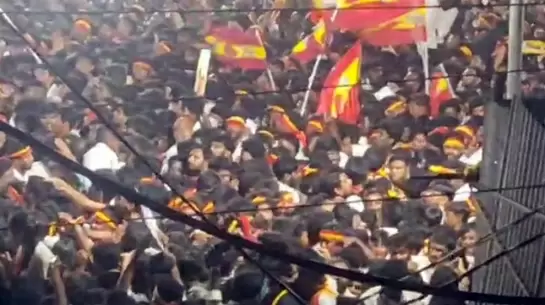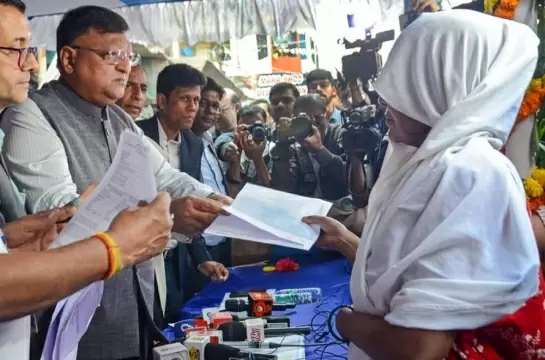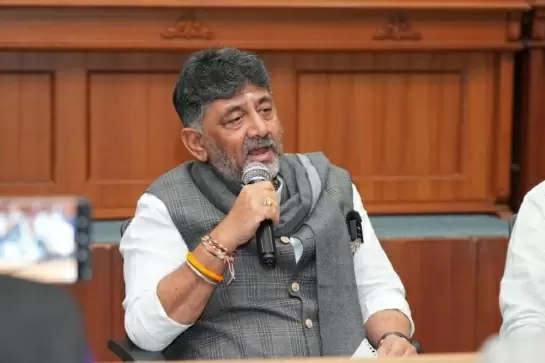If tourists visiting Jarawa land lack sensitivity, the guides know nothing

19-October-2012
Vol 3 | Issue 42
The Jarawas, among the world's oldest surviving inhabitants, have lived in splendid isolation from the rest of the humanity. Essentially hunters-gatherers, they live inside 1,028 square kilometres of the dense evergreen forests of Middle and South Andamans, also called the Jarawa Reserve.
Unfortunately, these days, in a bid to capture the imagination of your not-so-average adventure tourists, many travel planners advertise 'Jarawa tourism'. So, what happens when twenty-five diesel smoke spewing cars, packed with ill-informed tourists embark upon a journey that encourages voyeurism? This excerpt describes every last gory detail of the 'joyride' that puts the last of the First People on display for money.
.webp) |
|
Tourists are taken into the Jarawa Reserve for some 'exotic adivasi darshan' (Photo: Gunjan Veda)
|
Two years later, in December 2008, I returned to the Andaman Islands incognito, as a tourist. My travel agent had earlier told me that the highlight of my trip to Baratang would be the 'adivasi darshan'.
I had seen travel websites which were advertising 'Jarawa tourism' and encouraging voyeurism, so I decided to play along. We reached the Jirkatang checkpost at 5 a.m. The place was buzzing with people. There were at least twenty-five cars, packed with tourists. The entire conversation was about 'seeing' the adivasis. I heard many people asking their guides, 'Bhaiyya, kab dikhenge?' (When will we see them?) 'Why can't we take pictures?'
I asked my guide, a young Tamil, Sunil, the same question. He said that the AJJVS had spread rumours among the Jarawa that if their picture was taken, they would contract diseases.
Now the Jarawa resist being photographed. 'Aisa kuch hota nahi hain, Madam. Police walon ko bhi isse problem nahi hoti hain but AAJVS [Andaman Adim Janjati Vikas Samiti] ke orders hain. (Nothing really happens. Even the police do not have a problem with the photographs but these are AAJVS orders),' he explained shaking his head at the apparent 'unreasonableness' of the AAJVS diktat.
Resisting an urge to explain the AAJVS' reasons, I continued my ruse as the curious tourist. I asked him how they would know if I took a photo. He said, 'Madam, if the Jarawa complain, you will be fined.' I asked him what the chances were of seeing the adivasi. Hamesha hi dikhte hain.' (They are always seen.)
He was right. Fifteen minutes into the Reserve, we had our first 'sighting', three Jarawa tribals - man, woman and child, on either side of the road. Our car slowed down, just like all the other cars in the convoy.
I saw tourists waving frantically, trying to get the attention of the Jarawa. All along the road in the Reserve area there were abandoned cans of tar, plastic mineral water bottles, bags of chips. This time, however, the ATR was not so bumpy; many labourers were inside the Reserve, trying to repair sections of the road.
The entire conversation in Baratang was about the adivasis. Various stories circulated. My driver, Mithun, was a thin Bengali in his early thirties. He told me who the Jarawas were.
'Madam, they are ex-convicts from Uttar Pradesh, Bihar, etc., who had been let loose by the Britishers in the forests. Due to the isolation, they lost their mental equilibrium, shed their clothes and became aggressive. They started killing people with poisoned bows and arrows. That is why we move in a convoy. It keeps us safe,' he explained.
Sunil, at least, knew that the Jarawa had come from Africa hundreds of years back. 'They are junglee (wild, uncivilized). In fact, there are four other jungle tribes in Andaman and Nicobar. Some, like the Sentinelese, are dangerous. Only the Nicobarese are a little civilized, like us.'
The return convoy left Baratang at 3 p.m. It was led by a tourist bus which was three vehicles ahead of us. Yet we could not open our windows because the bus was spewing black smoke. Many of us were choking.
Twenty minutes into the Reserve, the car in front of us moved to the side and stopped. The convoy kept moving. 'Wasn't that illegal?' I asked. Mithun and Sunil merely shrugged their shoulders.
Ten minutes later, the convoy stopped. A dozen men and women got out to answer nature's call. Strangely enough, none of them wanted to use the bathroom at Baratang! Just before the Reserve area begins, on both sides, toilet complexes which are surprisingly clean have been built. But half an hour into the Reserve, everyone had to get out and wander into the forest. A deliberate ploy to catch a glimpse of the Jarawa, I wondered?
After about ten minutes, a hassled-looking constable got out of the bus leading the convoy and began to request everyone to get into the bus. A few minutes later, we came across another Jarawa.
.webp) |
|
Interactions such as this is common in the Jarawa Reserve (Photo Courtesy: The Light of Andamans)
|
Standing alongside the road, he was signalling for the vehicles to stop. This time, however, the convoy did not stop. The rest of the journey inside the Reserve, while extremely distressing for my lungs, was uneventful. Only Mithun was unhappy. He had to adhere to the speed limit of 40 kmph. 'Usually we don't bother with these restrictions; 60 or 70 kmph is the norm.'
As soon as we got out of the Reserve, a local constable decided to ride with us to Port Blair. A stocky, middle-aged man, with a slight pot-belly, he had been on duty at the Jarawa Reserve for a year now.
I asked him what it was like to be with the Jarawa. "Earlier it was very difficult. They troubled us. Gradually, they have started listening. But we have to constantly monitor them because they are junglees. They can attack any time.
“Just a few days back, some tired fishermen had landed in the forests and built a fire to cook their meal. They were hungry after working all day. Without any provocation, the Jarawa attacked and killed one of them. This is how crazy they are,” he warned us.
The keeper of law and order took a very sympathetic view of poachers! He completely forgot that the fishermen were not allowed to fish up to five km of the coastal line (from the high tide line). It was part of the Jarawa Reserve.
I asked him how he communicated with the Jarawa. 'Their kids understand a little Hindi now. We are trying to teach them.'
Three years after our visit to the Reserve, the debate on the indigenous tribes of the Andamans is far from resolved. Should we preserve them as one of the most unique societies on earth or should they be integrated with the mainstream?
(Excerpted from Beautiful Country - Stories From Another India By Syeda Hameed and Gunjan Veda; Published by Harper Collins) - Women's Feature Service















